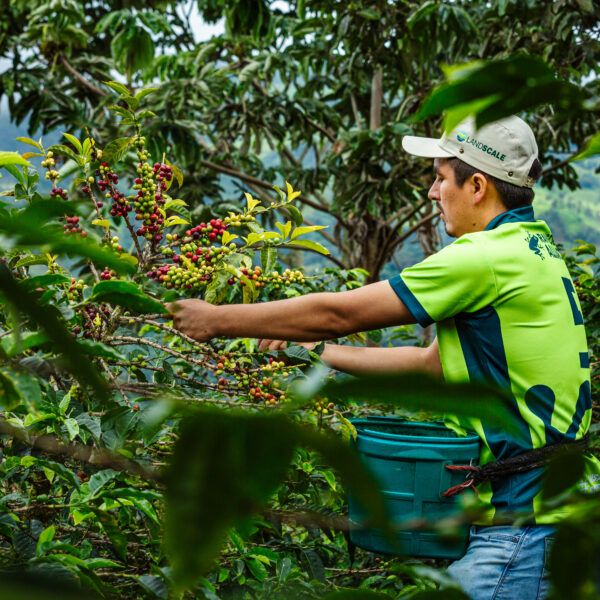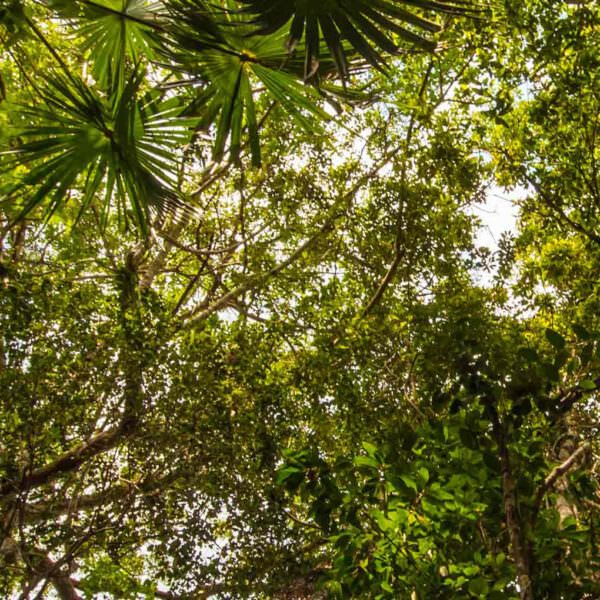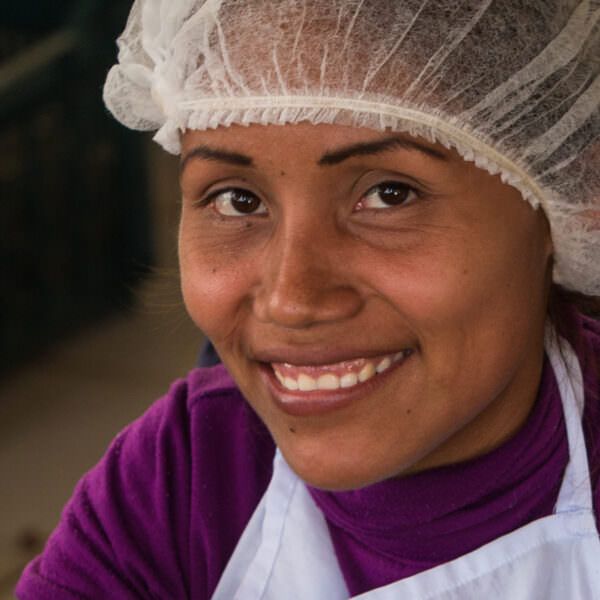The project was designed to counteract several of the major threats to biodiversity and livelihoods in the Andean-Amazon region.
The Rainforest Alliance and its partners in the region identified the principal threats to biodiversity in these landscapes as habitat degradation and loss due to wholesale deforestation or land-use conversion; gold mining is a further threat unique to the Peruvian landscape, affecting the Tambopata Reserve and its surrounding buffer zone.
The drivers or root causes of these threats can be grouped into three areas: a) limited institutional capacity by local governments and communities for natural resource management; b) limited participation in and access to programs by local groups for resource management and sustainable production chains; and c) weak organizational capacity and market linkages of local producers and operators to grow local economic opportunities.
Another set of structural “mega-drivers” affecting biodiversity in the selected landscapes are large-scale extraction of natural resources, such as oil exploration and drilling in Ecuador, and large scale infrastructure projects like the Inter-oceanic Highway in Peru. Land tenure and access, and illegal logging are also driving biodiversity loss. Because of their magnitude, complexity, and persistence, it was beyond the capacity of this project’s primarily landscape focus to fully address these nationally-important issues. Nonetheless, our teams in Peru and Ecuador engaged at the national level in tandem with other projects and programs that address the same concerns—for example the USAID-funded Environmental Management and Forest Governance Support Program and Peru Forestry Initiative.
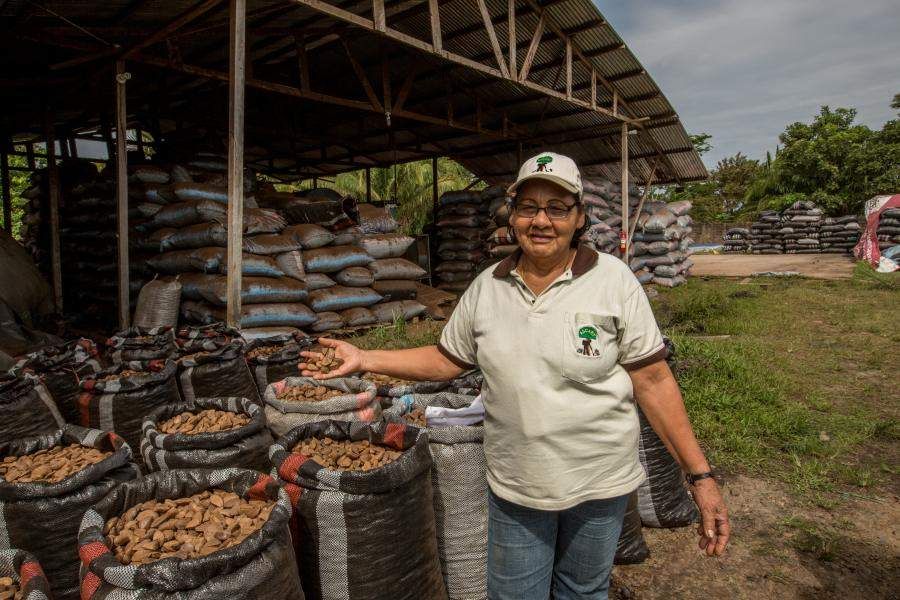
Location
Peru, Ecuador (Andean Amazon)
Project Objectives
This project piloted an integrated natural resources management model based on the following project objectives:
- Promoting sustainable landscape planning and application of sustainable natural resource management practices.
- Improving environmental governance and resource management.
- Creating sustainable economic alternatives for local groups and communities.
This four-year initiative was an integrated effort encompassing forestry, agriculture, tourism, climate, evaluation and research, and communications. Project activities included:
- Socioeconomic and environmental diagnostics to inform community-based natural resource management.
- Development of land-use zoning, life plans, management plans, and internal governance documents like statutes and regulations to improve community management.
- Creation and strengthening of local producer associations, with a specific focus on women-led associations.
- Creation of subnational and national-scale regulations on legal palm fruit harvesting, improving fire management in coffee and cocoa production landscapes, and visitor management plans to promote sustainable tourism.
- Building market-linkages and improving competitiveness of smallholder coffee, cocoa, tourism, and community forestry operations.
Partner communities
A range of actors including local producer associations and private-sector buyers, tourism operations, indigenous federations, technical assistance providers, research institutions, and government agencies at the local, regional, and national level.
In Ecuador: Naranjilla Roundtable; Ministry of Environment; Ministry of Tourism, Ministry of Agriculture, Ranching, and Fisheries; Provincial Government of Napo; State University of the Amazon; 12 ecotourism operations; PROFOODS, a mass market retailer; and others.
Peru: Federación Nativa del Río Madre de Dios y Afluentes (FENAMAD); Asociacion Forestal Indigena Madre de Dios (AFIMAD); Regional government of Madre de Dios (GOREMAD); Association of Ecotourism Lodges of Madre de Dios; Universidad de Madre de Dios; Ministry of Environment; Forestry Authority; Coffee and Cocoa Technical Roundtable of Cusco; AGROBANCO (National Rural Development Bank); SENASA (National Agricultural Service); a range of coffee and cocoa buyers and cooperatives.
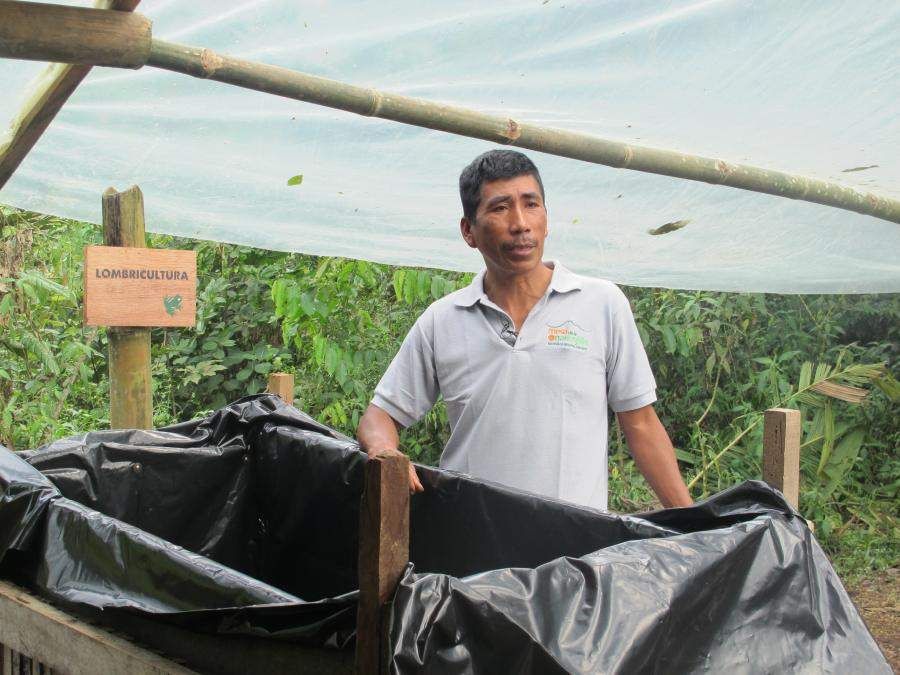
Project Results
- Improved management of more than 943,000 ha in critically threatened protected areas, indigenous territories, and smallholder producer lands.
- Facilitated access to 16 economic incentives initiatives for conservation, reforestation and restoration, credit and loans, and private-sector incentives, totaling over 2,500,000 million USD, benefitting 3,156 individuals. These and other incentives directly enhanced the economic value of 70,681 ha of indigenous territories, concessions within protected areas and private lands, and supported sustainable natural resource management in a much broader area.
- A total of 241 business plans, marketing materials, best management practices training guides, management plans, zoning maps, community governance tools, communications materials, and other products created to strengthen planning, governance, and economic activities delivered to 473,382 stakeholders from local land managers to the international conservation community.
- Strengthened capacity of 34 local organizations and enterprises, and over 19,386 native community leaders, producer associations, smallholders, tourism operators, local government officials, and other actors to implement these tools and sustainably manage their more than 943,000 ha of land and 16 economic incentives initiatives into the future, through completing over 101,044 person-hours of training.
- Supported communities, municipalities, and regional and national government agencies to develop 63 policies, regulations, and agreements that consolidate enabling conditions for sustainable landscape planning, governance, and economic opportunities.
For additional information please watch the following videos, which summarize key life-of-project achievements in each of the project landscapes:
- Indigenous Community Forestry Enterprises in the Peruvian Amazon (Madre de Dios, Peru)
- Sustainable Tourism in the Ecuadorian Amazon (Sucumbíos, Ecuador)
- Climate-Smart Coffee and Cocoa in the Peruvian Amazon (Cusco, Peru)
- Community Agroforestry in the Ecuadorian Amazon (Napo, Ecuador)
Partner Organizations
- Corporación Gestión y Derecho Ambiental (ECOLEX) – Ecuadorian partner
- Asociación para la Investigación y el Desarrollo Integral (AIDER) – Peruvian partner
- Consorcio para el Desarrollo Sostenible en la ecorregión andina (CONDESAN)
Funder
United States Agency for International Development (USAID)
Rainforest Alliance Contact
Mark Moroge, mmorge@ra.org


